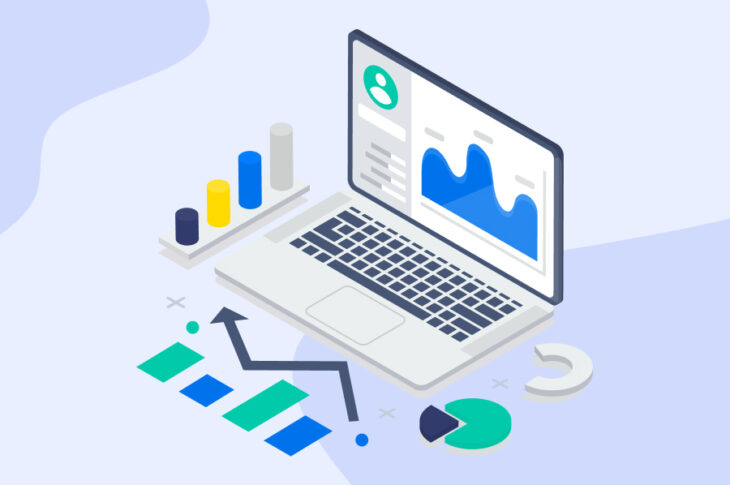Events vs sessions: why marketing and product analytics should collaborate
And how both evolved over time
The concept of using data to analyze and improve product performance has been around since the early 2000s, with the rise of web analytics tools such as Google Analytics and Omniture (now Adobe Analytics).
The term "Product Analytics" likely gained more popularity and recognition as a distinct field in the late 2000s and early 2010s, with the emergence of specialized product analytics platforms like Mixpanel (founded in 2009) and Amplitude (founded in 2012).
Mixpanel was one of the first companies to focus on event-based analytics specifically for products, which helped set the stage for other product analytics platforms like Amplitude to emerge and grow in the market.
Why events
Event-based analytics is a particular approach to data analysis that focuses on tracking and measuring specific user interactions or "events" within a digital product or application.
Some key aspects of event-based analytics include:
User-level data collection: Event-based analytics collects detailed information about individual user actions, such as clicks, page views, form submissions, or feature usage, providing a granular understanding of user behaviour.
Customizable tracking: It allows for tracking of custom events specific to the product or application, making it highly flexible and adaptable to different use cases and industries.
Real-time insights: Event-based analytics often provides real-time insights into user behaviour, enabling teams to quickly identify trends, issues, or opportunities and respond accordingly.
Segmentation and personalization: With event-based analytics, it's easier to segment users based on their actions and preferences, enabling more targeted marketing and personalization efforts.
Funnels and conversion analysis: This approach enables businesses to analyze user behaviour across different stages of the customer journey, identify areas of friction or drop-off, and optimize conversion rates.
Improved product development: By focusing on specific user interactions, event-based analytics helps product teams make data-driven decisions to enhance features, fix issues, and improve the overall user experience
Digital analytics solutions like Google Analytics and Adobe Analytics do track events; however, their approach to event tracking is different compared to event-based analytics platforms like Mixpanel or Amplitude.
Google Analytics, especially the older Universal Analytics, was primarily focused on session-based analytics, which revolves around user sessions and page views. While it does provide event-tracking capabilities, its primary focus was not on event-based analytics. Google Analytics 4 (GA4) has shifted its focus more towards event-based tracking, offering a more flexible approach to event collection and analysis.
Adobe Analytics also offers event tracking, but its primary focus has been on web analytics and measuring the performance of marketing campaigns. Adobe Analytics is a more comprehensive platform, which can make event tracking more complex to set up compared to dedicated event-based analytics tools.
In summary, while Google Analytics and Adobe Analytics do offer event-tracking capabilities, their focus and approach are not solely on event-based analytics. They are broader analytics platforms that cater to a wide range of use cases.
How sessions are different
Session-based analytics focuses on understanding user behaviour within a specific period of time, known as a session. A session typically starts when a user visits a website or app and ends after a predetermined period of inactivity, often 30 minutes.
Some key characteristics of session-based analytics are:
Emphasis on page views and user sessions: Session-based analytics mainly revolves around tracking page views, time spent on pages, and the number of sessions per user. It provides insights into how users navigate through a website or app and which pages they visit during a session.
Bounce rate and session duration: These metrics are crucial in session-based analytics, as they help measure user engagement. Bounce rate refers to the percentage of single-page sessions where a user leaves without interacting further. Session duration measures the time users spend on a website or app during a single session.
User flow and navigation paths: Session-based analytics helps identify user flow, which refers to the path users take as they navigate through a website or app. Understanding user flow helps optimize site structure and design to improve the user experience and increase conversions.
Traffic sources and referrals: This type of analytics helps identify where users come from, including organic search, social media, or referral websites. By understanding traffic sources, businesses can optimize their marketing strategies to attract more visitors and improve their conversion rates.
Limited granularity: Session-based analytics may not provide in-depth insights into user behaviour at the individual event level. It's more focused on understanding user behaviour during a specific session and less on tracking every action a user takes on a website or app.
While session-based analytics provides valuable insights into user behavior during specific time frames, it may not capture the complete picture of user interactions and engagement within a website or app.
Some limitations of session-based analytics in measuring engagement include:
Limited granularity: Session-based analytics might not provide in-depth insights into individual user actions or events. Consequently, it may not capture micro-level interactions that contribute to user engagement.
Focus on aggregated metrics: Session-based analytics often emphasizes aggregated metrics like bounce rate, session duration, and page views, which may not be as effective in measuring engagement as event-based metrics.
Difficulty in tracking user paths: Session-based analytics might not be as adept in tracking the specific steps users take within a website or app, making it harder to understand and optimize the user journey.
In contrast, event-based analytics excels in measuring user engagement, as it tracks individual user actions, providing a more detailed understanding of user behaviour.
By capturing each event or interaction, event-based analytics allows businesses to better understand and optimize user journeys, identify points of friction, and enhance the overall user experience.
The problem with engagement
As session-based analytics focuses primarily on overall user activity rather than capturing individual user actions or events, it has limited ability to fully understand and optimize user journeys within a website or app.
Session-based analytics typically considers user activity within a single session, which may not accurately represent the user's entire experience. Users often interact with websites or apps across multiple sessions, and a session-based approach might not capture the complete user journey.
It often emphasizes metrics like bounce rate, session duration, and page views, which may not offer a comprehensive understanding of user paths. These aggregated metrics can obscure the details of individual user interactions, making it challenging to map out and optimize user journeys.
Finally, with session-based analytics, it can be difficult to link specific user actions to particular stages of the user journey. This can limit the ability to identify which actions contribute to desired outcomes, such as conversions or retention, and which actions may be causing users to leave or abandon the process.
Many experts in digital analytics have long recommended that businesses should not focus solely on measuring engagement.
Avinash Kaushik, (my admired Avinash Kaushik) for example, advocated for a more holistic approach to understanding user behaviour and optimizing the user experience.
It was as far as 2007 that Avinash set the tone with its post: Engagement Is Not A Metric, It's An Excuse.
“Even as creating engaging experiences on the web is mandatory, the metric called Engagement is simply an excuse for an unwillingness to sit down and identify why a site exists.” he wrote.
What has changed in digital?
The same year Avinash Kaushik wrote his famous article on engagement, Steve Jobs introduced the iPhone, and the seeds of a digital revolution were being sown.
However, it wasn't until 2008 that Apple introduced its App Store, which would further propel the shift towards a more digitally focused world.
During this time, the Digital Analytics Association was still known as the Web Analytics Association, reflecting the narrower scope of analytics at the time. The circumstances that would lead to a more comprehensive vision of digital analytics had not yet fully materialized, although these early developments were certainly the beginnings of a much larger transformation.
Years later, while optimizing websites remains a crucial aspect of online business, an increasing number of companies are now offering both web and app experiences.
This shift has given rise to the idea that a business can grow based on a digital product that attracts new customers, rather than relying solely on advertising campaigns. This evolution in thinking led to the introduction of the concept of "digital product" and the strategy of "product-led growth."
The emergence of digital products
The digital product concept refers to any software, application, or platform that provides value to users and drives business growth.
With the emergence of the product-led growth strategy, companies began to focus on creating exceptional digital products that would organically attract and retain customers. This approach relies on the product itself to serve as the primary driver of user acquisition, engagement, and retention, ultimately leading to sustainable business growth.
This organic growth model is in contrast to traditional strategies that rely heavily on sales and marketing efforts to attract and retain customers.
And the dawn of product analytics
As Product Lead Growth (PLG) emphasizes the importance of delivering an outstanding user experience and deriving value from the product, product analytics tools, play a crucial role in enabling and supporting a successful PLG strategy.
Some analysis facilitated by these tools are:
Cohort Analysis:
Segment users into groups with common characteristics.
Understand high-value customers and those who need encouragement.
Churn Analysis:
Identify the number of people sticking with or abandoning the product.
Uncover parts of the customer journey most affected by churn.
Retention Analysis:
Understand customer return rates over time.
Use cohorts to identify behaviours leading to product retention and develop retention strategies.
Funnel Analysis:
Visualize and measure user progress through a series of steps.
Identify opportunities for improvement and growth.
Conversion Analysis:
Compare users who complete all stages of the funnel to those who don't.
Conversion Drivers: in-product actions for insights on conversion or drop-off.
Milestone Analysis:
Identify actions high-value customers take and encourage more users to follow the same path.
Validate product milestones or explore product data to uncover customer milestones.
Customer Experience Analysis:
Examine the entire customer journey and all touchpoints.
Use personalization tactics and A/B testing to nudge customers toward high-value actions.
Personalize the Marketing Experience:
Leverage behavioural data for personalized experiences at scale.
Streamline personalization efforts and reliably measure product or campaign impact with a unified system for analytics and marketing personalization.
And these are some business questions the product analytics tools would help you to answer:
How are users engaging with the product over time?
Which features are being adopted and how quickly?
What are the common user paths and bottlenecks in the customer journey?
Which customer touchpoints contribute most to success or conversion?
How do customer behaviours and preferences change across different cohorts?
What are the retention rates for different customer segments, and how can they be improved?
What factors contribute to customer churn, and how can they be mitigated?
How effective is the marketing, sales, or onboarding funnel in converting users?
What are the key drivers of conversion, and how can they be optimized?
What milestones do high-value customers reach, and how can more users be encouraged to follow the same path?
How can the overall customer experience be measured and improved across all touchpoints?
Compare this list of questions with this other list of questions digital analytics tools focus on:
How are users finding our website or app (e.g., organic search, paid search, social media, referral)?
Which marketing channels are driving the most traffic and conversions?
What is the overall performance of our website or app (e.g., page views, unique visitors, bounce rate, average session duration)?
Which pages or sections of the website or app are the most popular, and which have high exit or bounce rates?
How are different user segments (e.g., demographics, location, device type) engaging with the website or app?
Which campaigns or promotions are the most effective in driving conversions or achieving specific goals?
What is the performance of our e-commerce platform (e.g., revenue, conversion rate, average order value, cart abandonment)?
How does website or app performance change over time or in response to specific marketing efforts?
How do users interact with specific elements on a page (e.g., clicks, scrolls, form interactions)?
What are the most common user paths or navigation flows through the website or app?
Should we choose one or the other?
Product analytics and digital analytics tools have some overlapping features, but they are designed to serve different purposes.
Depending on your business needs and goals, you might choose to use one or both types of tools.
In fact some organizations are choosing to use both product analytics and digital analytics tools to get a comprehensive understanding of their users, product performance, and marketing efforts.
And some tools are adapting so they can provide both solutions to their customer base.
GA4 aims to be a hybrid tool that combines digital analytics with product analytics capabilities.
While it maintains the core focus of traditional digital analytics (measuring website or app performance and user behavior), GA4 has introduced more advanced event-based tracking and analysis capabilities, making it more suitable for product analytics as well.
Avinash celebrated the introduction of GA4, which reignited discussions around engagement, a topic he presented this time as 'A New View of Engagement'.
It appears that his opinion on engagement has evolved in light of the new approaches and metrics available in Google Analytics 4
He argued that traditional metrics such as bounce rate and page views have been replaced by new engagement-focused metrics:
Engaged Sessions
Engagement Rate
Engaged Sessions Per User
Average Engagement Time
These new metrics provide additional nuances and deeper understanding of user engagement, allowing User Experience (UX) teams to utilize this data alongside the qualitative research they are conducting.
On the other hand Amplitude introduced new marketing analytics features such as ad-network integrations, acquisition channels, and multi-touch attribution in an attempt to provide a unified platform for both product and marketing analytics.
In this context the shift to GA4 by Google has been met with mixed reactions. While it aims to provide a more comprehensive analytics solution for businesses, some critics argue that the transition has been challenging due to its steep learning curve and the lack of feature parity with Universal Analytics.
On the other hand, Amplitude's recent move to incorporate marketing analytics features is an ambitious attempt to unify product and marketing analytics within a single platform. However, critics might argue that Amplitude's primary strength has always been in product analytics, and there is a risk of diluting its core offering by venturing into the marketing analytics domain.
Even Adobe has recently announced the incorporation of product analytics functionalities as part of Adobe's Customer Journey Analytics, which is also getting an AI-centric update.
It's not the plane, it's the pilot
As organizations recognize the importance of delivering a seamless and consistent customer experience across all touchpoints, the trend of increased collaboration between marketing and product teams is gaining traction in the industry.
However, it remains to be seen if these strategic moves by Google, Amplitude and Adobe, will truly address the evolving needs of businesses in the highly competitive digital environment.
As businesses continue to navigate the complexities of the digital landscape, it is essential for them to critically evaluate the offerings of different analytics platforms and choose the one that best aligns with their unique goals and objectives.
The success of these platforms in addressing the growing demand for a unified and collaborative approach to product and marketing analytics will be a critical factor in determining their position in the market.






